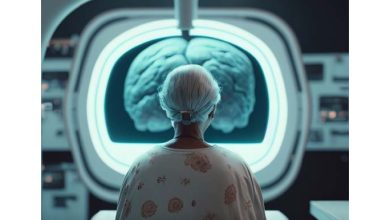The revolutionary journey of radiology – From an accident to a futuristic science

The branch of radiology has always been the fastest adapting area of healthcare and a pioneer in the integration of different technologies. An insight by Dr Avni K P Skandhan, Radiologist, Aster Medical Imaging, Aster MIMS
Kottakkal
With the advent of the new year, it’s time to reflect on the advancements that radiology has undergone.
“I have seen my death!” was the comment from William Röntgen’s wife, when she saw the first X-ray which was of her hand with the wedding ring. Since this, happy accident radiology has skyrocketed to shine as an indispensable part of medicine today. From the year 1895, through the radiology timeline, it grew in leaps and bounds with every decade. The transitions are many, from pixelised images to high- resolution images; from 2D to 3D and 4D acquisitions; from the black and white shades to colour-coded images; and from large structural abnormalities to the molecular level and chemical abnormalities. It’s not just the quality of the images, but also the variety of modalities that have been added on and the improvisation in each of them.
The branch of radiology has always beenthe fastest adapting area of healthcare and a pioneer in the integration of different technologies. These rapidly developing technologies have allowed medical professionals across the globe to take better care of patients. Radiography transitioned from traditional X-rays to Computed Radiography (CR) and Digital Radiography (DR) which provide filmless, high-resolution images and faster acquisition. The sick patients could be catered to, by portable units. These have become the foundation for today’s medical practice. Artificial Intelligence (AI), is an upcoming feature in the radiographic evaluation, predominantly during the pandemic period. The further newer techniques are Dual-energy DR imaging, DR tomosynthesis and dynamic digital radiography (DDR).
Mammograms came into vogue in the mid-20th century and transitioned from 2D mammography to high- resolution digital mammograms and 3D mammograms/computed tomosynthesis. This heralded an era of early detection of breast cancer and improved survival.
Fluoroscopy transitioned from the funnel-shaped cardboard machines, requiring long acquisition times in darkened rooms to currently DSA (Digital subtraction angiography) and even hybrid imaging of DSA with CT
(Computed Tomography). The images acquired are detailed and helpful in the evaluation of the vascular and non-vascular contrast administered studies.
Ultrasonography is the earliest non-ionizing radiation modality and hence got wide acceptance in obstetric imaging and as the first line of investigation in various other scenarios. Smaller machines lead to a rise of Point Of Care Ultrasound Scan (POCUS) and fastening treatment delivery. Further advances led to new probe designs which helped in detailed high-resolution superficial imaging, endoluminal imaging, 3D and 4D volumetric imaging, contrast- enhanced imaging etc. Doppler imaging helps in detailed structural and dynamic evaluation of the vessels.
CT has developed fast from single slice to multi-slice CT’s providing excellent, high-resolution cross-sectional images of the body with a faster acquisition. The various algorithms provide highly representative 3D reconstructed images. The newer techniques of integration of the AI algorithms into the CT systems and dual-energy CT aid in certain specific conditions.
The advent of Magnetic Resonance Imaging (MRI), improvised neurological, musculoskeletal and body imaging with very high-resolution images. Contrast administration, Diffusion and Perfusion imaging, highly weighted T2
images, such as MR Urogram, MRCP, myelogram etc. SWI (Susceptibility weighted imaging) and time of flight (TOF) imaging have become the norm. Further innovations such as volumetric analysis, MR spectroscopy providing the chemical composition, MR tractography depicting the white matter tracts, dynamic MRI for pelvic floor integrity, cardiac MRI showing the structural and dynamic function of the heart, foetal MRI with detailed evaluation of the foetus and functional MRI detecting the brain activity lead to improvised methods of evaluation.
Nuclear medicine, which involves radiation produced within the human body via various radiotracers has also undergone significant development, especially with wide usage of the PET scan and bone scans. PET MRI is another upcoming development in a similar league.
Opening the floodgates of the digital era, led to a shift from a film-based system to that of a filmless system and heralded a new generation of radiologists who reported on filmless, DICOM (Digital Imaging and Communications in Medicine) compatible monitors linked to PACS (Picture Archiving and Communication Systems) with cloud storage of images.
The rapidly evolving and constant innovations in medical imaging technology meant a landscape, which may not look the same, in the forthcoming decade and hence a regular update is recommended.




